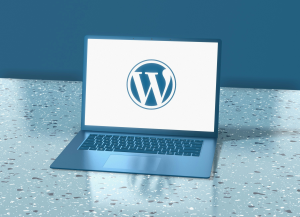🖥️ WordPress Design: A Complete Beginner’s Guide (2025)
In today’s digital world, having a stunning website is essential—whether you’re running a business, growing a personal brand, or starting a blog. And when it comes to designing websites with flexibility and ease, WordPress continues to be the most powerful and user-friendly platform available.
In this article, we’ll walk you through the basics of WordPress design, best practices, and essential tools to help you create a beautiful, functional, and responsive website from scratch.
✅ Why Choose WordPress?
WordPress powers over 43% of all websites on the internet (as of 2024). Here’s why:
- User-Friendly Interface: No coding skills required
- Thousands of Themes: Free and premium options
- Plugins for Everything: SEO, security, forms, eCommerce, and more
- Fully Customizable: From headers to footers
- Mobile Responsive: Most themes adapt perfectly to phones and tablets
🎨 WordPress Design Basics
1. Choosing the Right Theme
Your theme determines the overall look and layout of your site.
When choosing a theme:
- Make sure it’s lightweight and fast-loading
- Ensure it’s mobile responsive
- Choose one that supports page builders like Elementor or Gutenberg
- Popular themes: Astra, Hello Elementor, GeneratePress, OceanWP
2. Using Page Builders (Like Elementor)
Page builders let you design using drag-and-drop. No need for HTML/CSS.
- Elementor (Free & Pro): Most popular, great for full custom design
- Gutenberg: WordPress’s built-in block editor
- Brizy / Beaver Builder: Other good options
With these, you can visually create headers, hero sections, galleries, testimonials, and much more.
3. Creating a Visual Hierarchy
Good design isn’t just about looking pretty — it must guide the visitor.
- Use clear headings (H1, H2, H3)
- Choose two or three brand colors and stick to them
- Use white space to avoid clutter
- Keep fonts clean and readable (Google Fonts like Poppins, Inter, Roboto are great)
4. Optimizing for Speed and Mobile
A beautiful site is useless if it’s slow. Use:
- Caching Plugins (e.g., WP Rocket, LiteSpeed)
- Image Optimization Tools (e.g., ShortPixel, Smush)
- Responsive Design Testing (Check on different devices)
- Use tools like PageSpeed Insights to test performance
🔐 Design with Functionality in Mind
Design is more than visuals — it should help the user do what they came for.
- Clear Call-To-Actions (CTAs) like “Buy Now”, “Contact Us”
- Easy navigation menu
- Search function for blog-heavy sites
- Footer with contact & social links
🧩 Must-Have Plugins for WordPress Design
| Purpose | Plugin Suggestion |
|---|---|
| Page Builder | Elementor |
| SEO Optimization | Rank Math / Yoast SEO |
| Speed Optimization | WP Rocket / LiteSpeed |
| Contact Forms | WPForms / Contact Form 7 |
| Design Blocks | Essential Addons, Happy Addons |
💡 Pro Tips for Better WordPress Design
- Stick to a consistent layout across pages
- Avoid too many animations or colors
- Test your website on mobile, tablet, and desktop
- Keep your design accessible — readable fonts, contrast, alt texts
- Use templates to speed up the process (Elementor kits, theme demos)
🎯 Conclusion
WordPress gives you full control over your website’s design — without needing to be a professional developer. With the right tools, theme, and strategy, you can build a modern, fast, and user-friendly website that impresses your visitors and grows your brand.
Whether you’re building a portfolio, an eCommerce store, or a business site — great design starts with WordPress.

